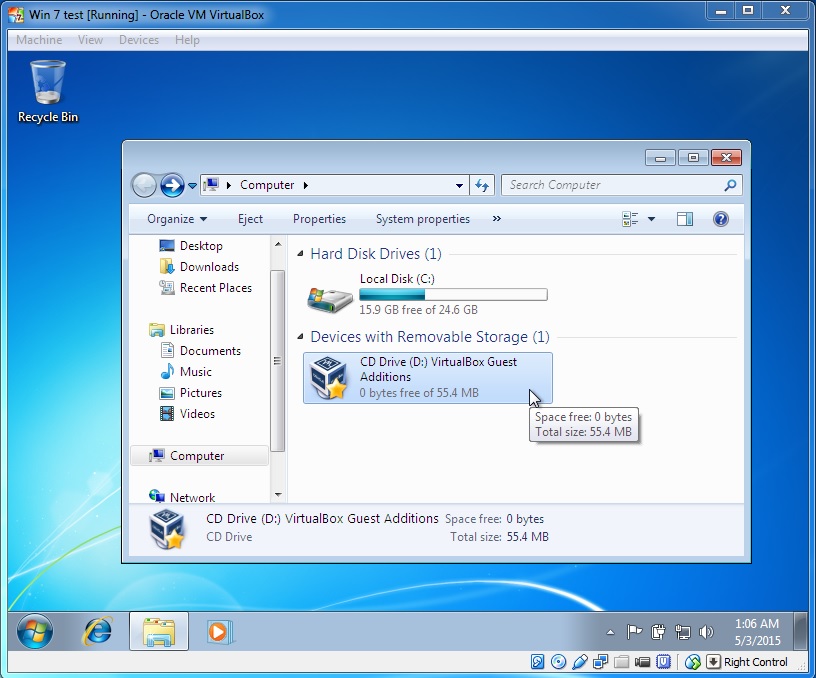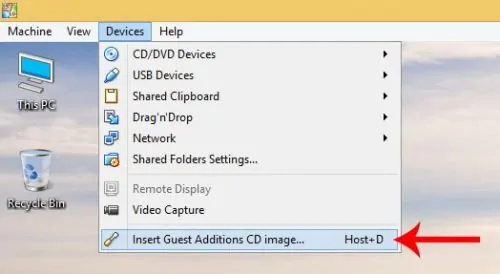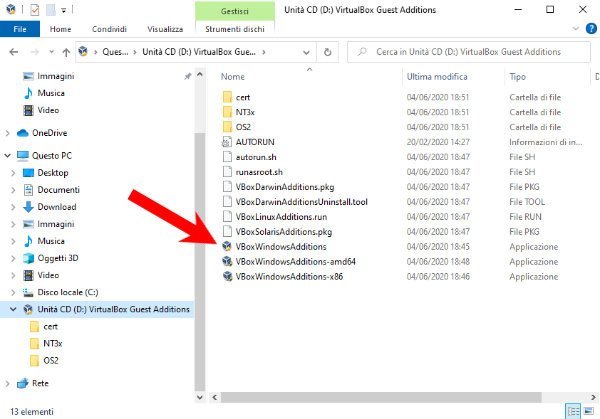

proper mouse and screen integration, as well as folder sharing). When you next re-start the VM, the window should now be a more reasonable size.Installing “Guest Addition”, gives a better user experience with VirtualBox VMs (e.g. Go to the VirtualBox application itself and with the VM selected, go to the File/ Preferences menu.Ĭlick on Display, and set the Maximum Guest Screen Size to Automatic If, by some chance you are still faced with a small viewport for your Windows VM, you can try the following… Resizing the VM display When Windows prompts you, choose to install :Īccept the defaults when prompted and then reboot the VM. Now, using the same menu ( Devices), we select Insert Guest Additions CD Image : To do this, we actually go to the VM’s VirtualBox menu and select Devices/ Optical Drives/ Remove disk from virtual drive : Among other things, this will help to control the screen size of the VM so that I don’t need a magnifying glass !įirst of all, we need to virtually eject the virtual cd containing the Windows ISO. Now I’ve configured Windows, I still need to install VirtualBox Guest Additions. However, you may be interested to learn that you don’t necessarily require a Product Key for this installation.Ĭhris Hoffman has produced an excellent guide on the subject. I now have a new VM, which I need to point at the Windows ISO I downloaded so that I can install Windows itself :Īll I have to do now is follow the Windows installation prompts, a process which I’ll not bore you with here. I’m going to create a Virtual Hard Disk : rw-rw-r- 1 mike mike 4.7G Jul 10 17:10 Win10_1903_V1_English_圆4.isoįire up VirtualBox and click on the New button to start the Create Virtual Machine wizard : After the download, I am now the proud owner of : …before we’re presented with a choice of 32 or 64-bit :

In this case, I simply want to try Windows 10 so I need to go to this page. Microsoft provides an ISO for a 180-day evaluation version of Windows Server here. Finding a Windows ISOĭepending on which Windows edition you are after, there are a couple of places you can look. The Guest OS I’m installing is, as you’d expect, Windows 10. NOTE – steps to install VirtualBox on a Debian-based host such as Ubuntu can be found here. The Host OS I’m running is Ubuntu 16.04 LTS.


The following steps will work for VirtualBox on any host – Linux, Mac, even Windows. The answer is, of course, yes – otherwise this would be quite a short post. If, like me, you’re OS of choice is Ubuntu but you need to test how something behaves in Windows – is it possible to knock up an appropriate environment ? These days, you even have access to an Ubuntu sub-system in Windows itself. There are lots of guides out there on how to set up and run Ubuntu in VirtualBox on a Windows host.


 0 kommentar(er)
0 kommentar(er)
